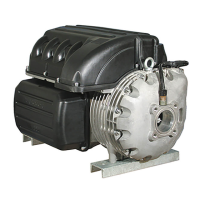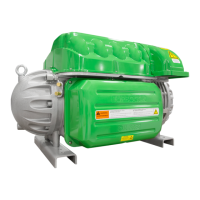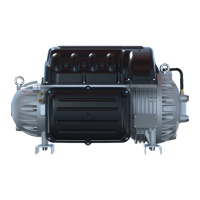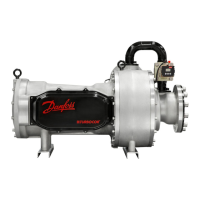94 of 132
M-SV-001-EN Rev.E
Troubleshooting
4.1 Alarm and Fault
Indications
4.1.1 Alarm Types
4.1.2 Fault Types
The first step in troubleshooting is to gather as
many facts as possible. Compressor fault and
event logs provide factual historical information
that will indicate the exact reason that the
compressor shut down, the frequency of faults
and compressor starts, as well as the value of
pertinent parameters at the time of the fault.
These logs should be reviewed in detail to gain
information to allow efficient troubleshooting for
any fault.
Alarms indicate compressor operating conditions
are beyond set limits of the normal operating
envelope or set alarm limits. Compressor alarms
will allow the compressor to run, but speed is
typically reduced to bring the condition under
the alarm limit. See Table 17 (Alarm Types).
Critical and non-critical faults indicate
compressor operating conditions are beyond set
limits of the normal operating envelope or set
fault limits. Exceeding fault limits will stop the
compressor in 10 seconds or less. See Table 18
(Compressor Fault Types), Table 19 (Motor Fault
Types) and Table 20 (Bearing Fault Types).
Table 17 - Alarm Types
Compressor Alarm Description
Inverter Temperature The measured Inverter temperature has exceeded the alarm limit.
Discharge Temperature The measured discharge temperature has exceeded the alarm limit.
Suction Pressure The measured suction pressure has exceeded the alarm limit.
Discharge Pressure The measured discharge pressure has exceeded the alarm limit.
3-Phase Over-Current The calculated 3 phase current has exceeded the alarm limit.
Cavity Temperature The measured cavity temperature has exceeded the alarm limit.
Leaving Fluid Temperature
The lowest acceptable measured leaving fluid temperature has exceeded
the alarm limit.
Pressure Ratio
The calculated pressure ratio of discharge/suction has exceeded the alarm
limit.
SCR Temperature The measured SCR temperature has exceeded the alarm limit.
Superheat
The calculated superheat temperature has exceeded the alarm limit.
The difference between the fault limit and the alarm limit is the dead band
for the control. The superheat alarm is always set 8°K below the fault limit.
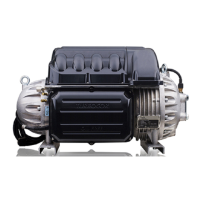
